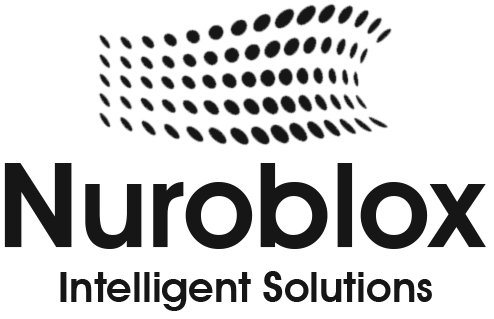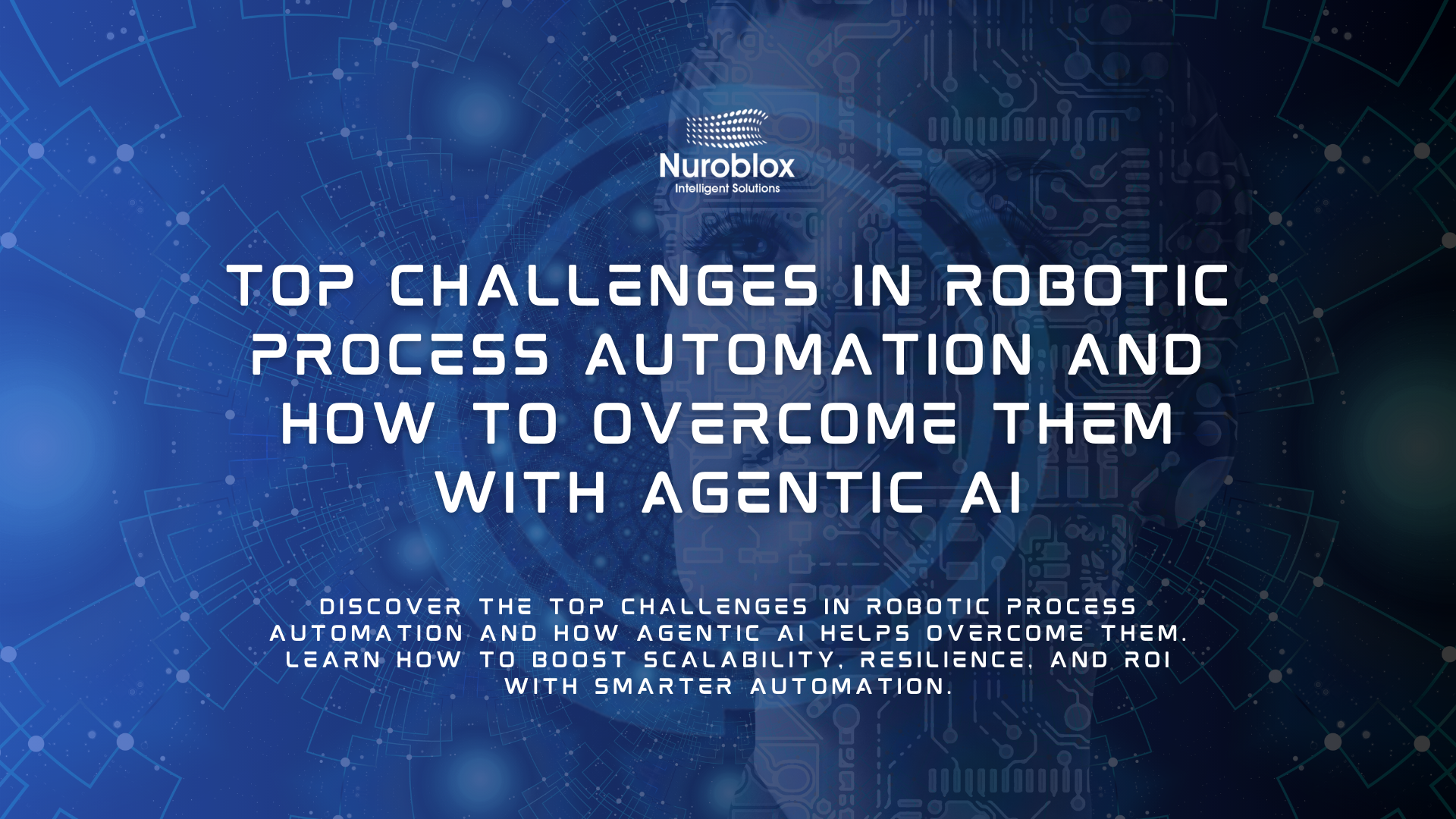Top Challenges in Robotic Process Automation and How to Overcome Them with Agentic AI
The promise of Robotic Process Automation (RPA) is compelling: streamline operations, slash costs, and liberate human workers from the monotony of repetitive tasks. Yet, for many organizations, the reality of RPA implementation falls short of this vision. A staggering statistic from Ernst & Young reveals that up to 50% of initial RPA projects fail, a figure that underscores a significant gap between potential and execution. While traditional RPA excels at automating simple, rule-based processes, it often falters when faced with complexity, change, and the need to scale.
This is where a new, more intelligent paradigm of automation is taking center stage – Agentic AI. Unlike its predecessor, Agentic AI doesn’t just follow a script; it perceives, reasons, and acts autonomously to achieve goals. It can handle ambiguity, learn from experience, and interact with a multitude of systems to execute complex, end-to-end workflows. This article explores the top challenges hindering RPA success and demonstrates how Agentic AI provides the solutions to overcome them, paving the way for a new era of intelligent automation.
The Promise and Pitfalls of Traditional RPA
Traditional RPA has been a game-changer for automating high-volume, repetitive tasks like data entry, invoice processing, and report generation. These software “bots” mimic human actions to interact with digital systems, executing workflows based on predefined rules. The benefits are clear – increased efficiency, enhanced accuracy, and significant cost savings. However, as organizations attempt to move beyond simple task automation, they encounter a series of formidable challenges.
Challenge 1 – Integration and Scalability Hurdles
One of the most significant barriers to successful RPA is integrating bots with a complex web of existing enterprise systems, especially legacy applications. According to PwC, 45% of companies using robotics and AI struggle with deployment or integration difficulties. Bots are often brittle; a minor change to a user interface can break an automation, leading to significant maintenance overhead.
Furthermore, scaling RPA initiatives from a handful of pilot projects to an enterprise-wide digital workforce has proven exceptionally difficult. A Deloitte report highlights this struggle, finding that a mere 3% of organizations have successfully scaled their RPA programs. This is often due to the performance limitations of bots running on virtual machines, which can become overwhelmed by large data volumes and complex processes.
Challenge 2 – High Maintenance and Performance Bottlenecks
Traditional RPA bots require constant maintenance. Every time an application is updated or a process changes, the bots must be reprogrammed, creating a high-maintenance environment that consumes valuable developer resources. Performance can also become a major issue. Bots iterating through thousands of data items or interacting with slow-loading UI elements can create significant delays, negating the very efficiency they were meant to create.
Challenge 3 – Employee Resistance and Pervasive Skill Gaps
The human element is a critical, often underestimated, challenge. Employees may fear that automation will make their jobs obsolete, leading to resistance and poor adoption. While research shows this resistance tends to decrease as familiarity with the technology grows, a more pressing issue is the profound lack of necessary skills. A survey from Deloitte and IBM found that 90% of executives believe their organization lacks the skills for even basic process automation, a figure that rises to 75% for intelligent process automation.
Challenge 4 – Security and Compliance Risks
RPA bots often handle sensitive data and require access to multiple systems, creating potential security vulnerabilities. Ensuring that bots adhere to strict data protection and compliance protocols is a major challenge that requires robust governance and monitoring.
The Agentic AI Revolution – A New Paradigm for Automation
As the limitations of traditional RPA have become apparent, Agentic AI has emerged as a transformative solution. It represents a fundamental shift from rule-based automation to goal-oriented, autonomous systems that can learn, adapt, and make decisions.
What is Agentic AI? From Rule-Based to Goal-Oriented Automation
While RPA bots are programmed to follow a rigid set of “if-then” instructions, AI agents are designed with a goal in mind and are empowered to figure out the best way to achieve it. They leverage large language models (LLMs), reasoning engines, and the ability to use external tools and APIs to navigate complex, dynamic environments. Key characteristics include –
- Autonomous Decision-Making – AI agents can analyze data, assess situations, and make optimal decisions in real-time without human intervention.
- Continuous Learning – Using principles like reinforcement learning, agents learn from feedback and experience to continuously optimize their performance over time.
- Seamless Integration – A defining feature is their ability to interact with a wide range of external tools, APIs, and services, enabling them to orchestrate complex, end-to-end tasks across different software environments.
How Agentic AI Overcomes RPA’s Core Challenges
Agentic AI directly addresses the primary weaknesses of traditional RPA, providing a more robust, scalable, and intelligent solution.
- Solving Integration and Scalability – Agentic AI is designed for interoperability. Its ability to seamlessly connect with various systems via APIs allows it to navigate complex IT landscapes, including legacy systems, far more effectively than brittle RPA bots. Because they can be built on modern cloud platforms, AI agents can scale to support increasing workloads without the performance degradation common in traditional RPA.
- Reducing Maintenance and Enhancing Performance – The adaptive learning capabilities of Agentic AI dramatically reduce maintenance overhead. When a process or system changes, an AI agent can often adapt without needing to be reprogrammed. They are also capable of handling complex, multi-step workflows, such as those in supply chain management or financial reporting, with a level of efficiency that traditional bots cannot match.
- Empowering Employees and Bridging Skill Gaps – Agentic AI reframes the conversation around automation. By automating complex, cognitive tasks, it frees up human employees to focus on high-value strategic work like innovation and complex problem-solving. Furthermore, because AI agents can be developed using natural language instructions, they lower the technical barrier to creating automation, empowering a wider range of employees to participate in digital transformation.
- Improving Security and Compliance – Intelligent agents can be designed with sophisticated monitoring capabilities to ensure compliance with regulations and internal policies, reducing legal and financial risks for the organization.

The convergence of RPA and Agentic AI is already driving value across industries like finance, healthcare, and manufacturing.
Transforming Customer Service
Agentic AI is poised to autonomously resolve up to 80% of common customer service issues by
These are not simple chatbots; they are comprehensive problem-solving agents that can diagnose issues, access multiple systems, and implement solutions independently. For instance, a telecommunications company can deploy an agentic AI that detects a service outage, identifies affected customers, initiates repair workflows, and proactively communicates updates and service credits all without human intervention.
Streamlining Complex Business Workflows
Organizations are using Agentic AI to manage complex processes that have traditionally required significant human coordination. In finance, AI agents can manage the entire invoice processing workflow, from extracting data from documents to validating it across multiple systems and generating reports. A global manufacturer, for example, implemented an agentic AI to manage its supplier onboarding process, which now automatically verifies credentials, assesses risk, negotiates standard contracts, and sets up vendor profiles across all enterprise systems.
The Future of Work – A Collaborative Ecosystem
The future of automation is not a choice between RPA and Agentic AI, but a synergy of both. Leading companies are building a collaborative ecosystem where humans, traditional bots, and AI agents work together. RPA bots will continue to handle structured, high-volume tasks with efficiency, while AI agents tackle the more complex, dynamic, and cognitive work. This blended approach allows businesses to automate a wider spectrum of human tasks, freeing employees to focus on the strategic, creative, and interpersonal work that drives innovation and growth.
This evolution moves beyond simple process automation toward truly autonomous operations. As Agentic AI continues to mature, it will not just execute tasks but will actively redefine how organizations operate, adapt, and create value. How will your organization leverage this powerful new capability to build a more efficient, resilient, and innovative enterprise?


